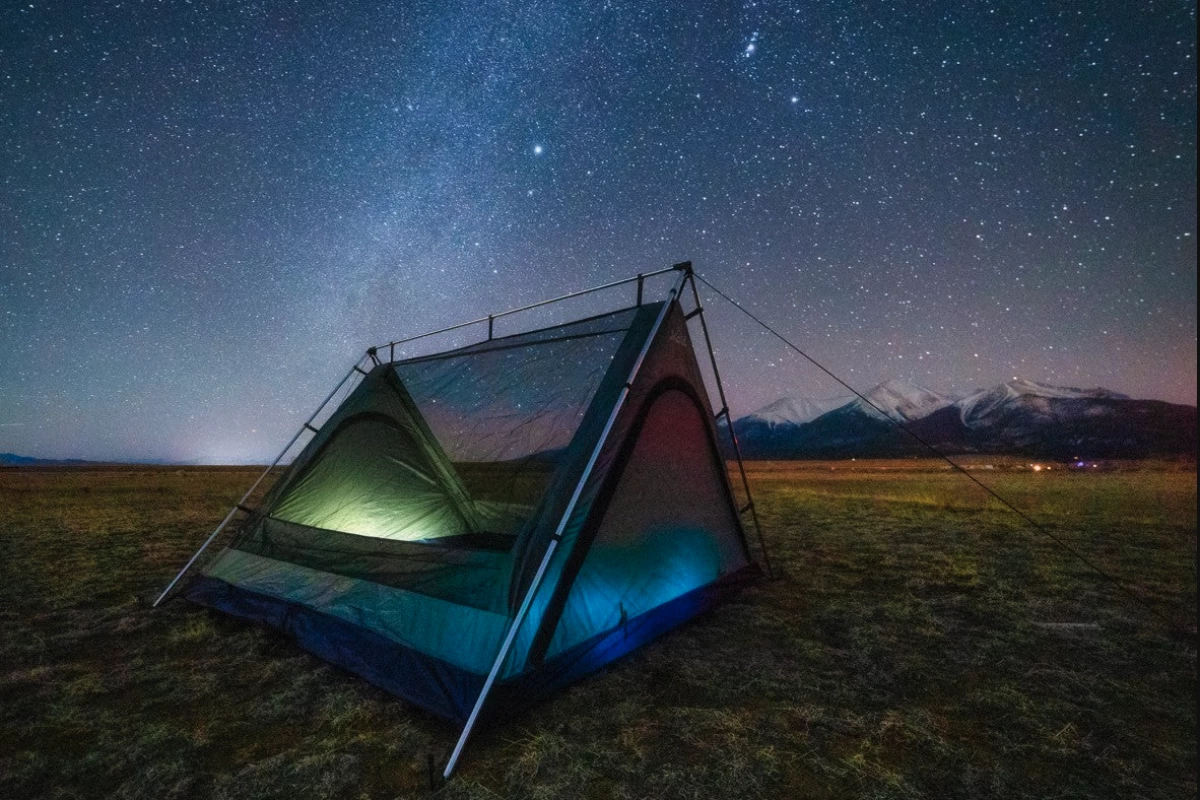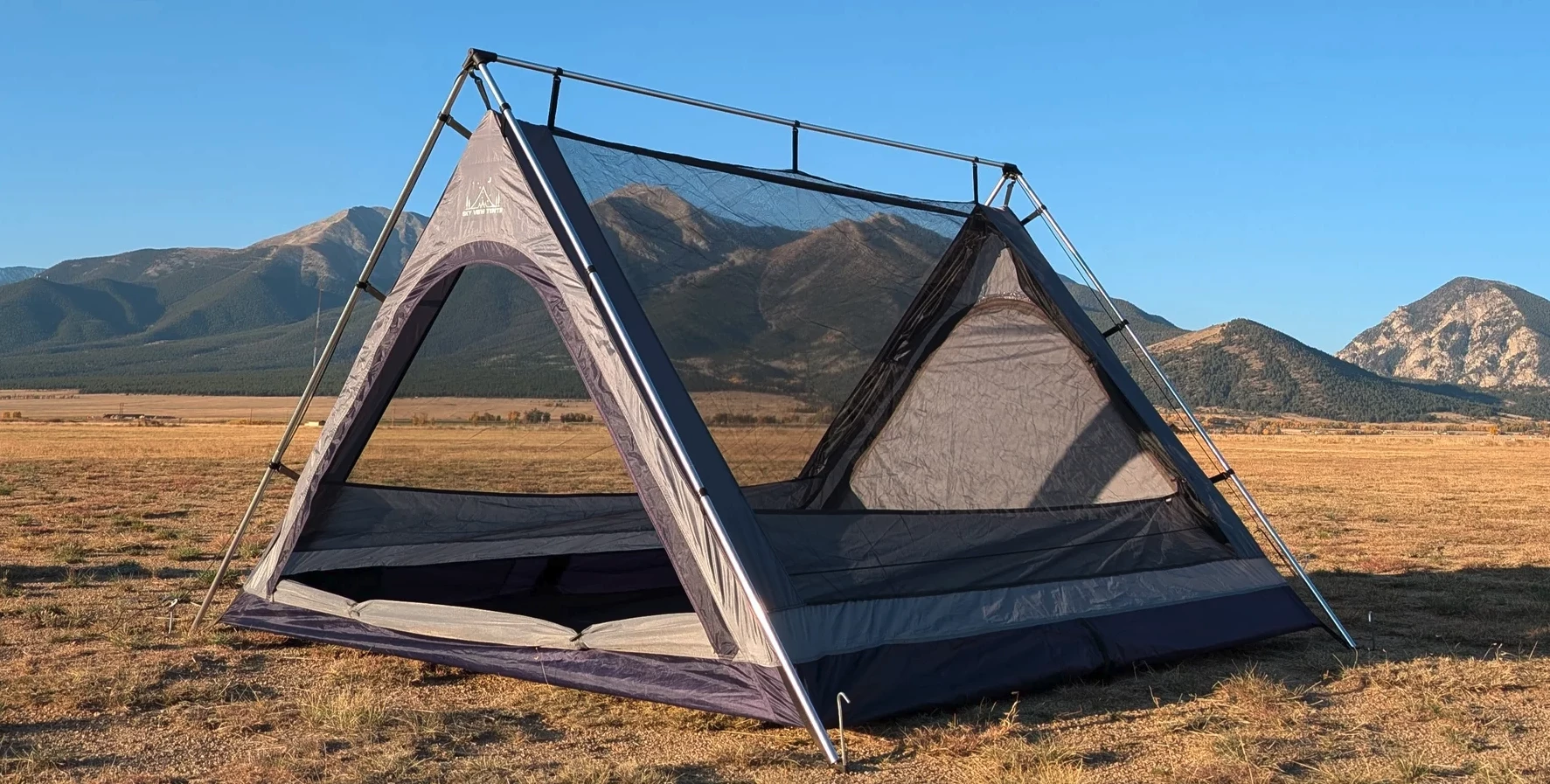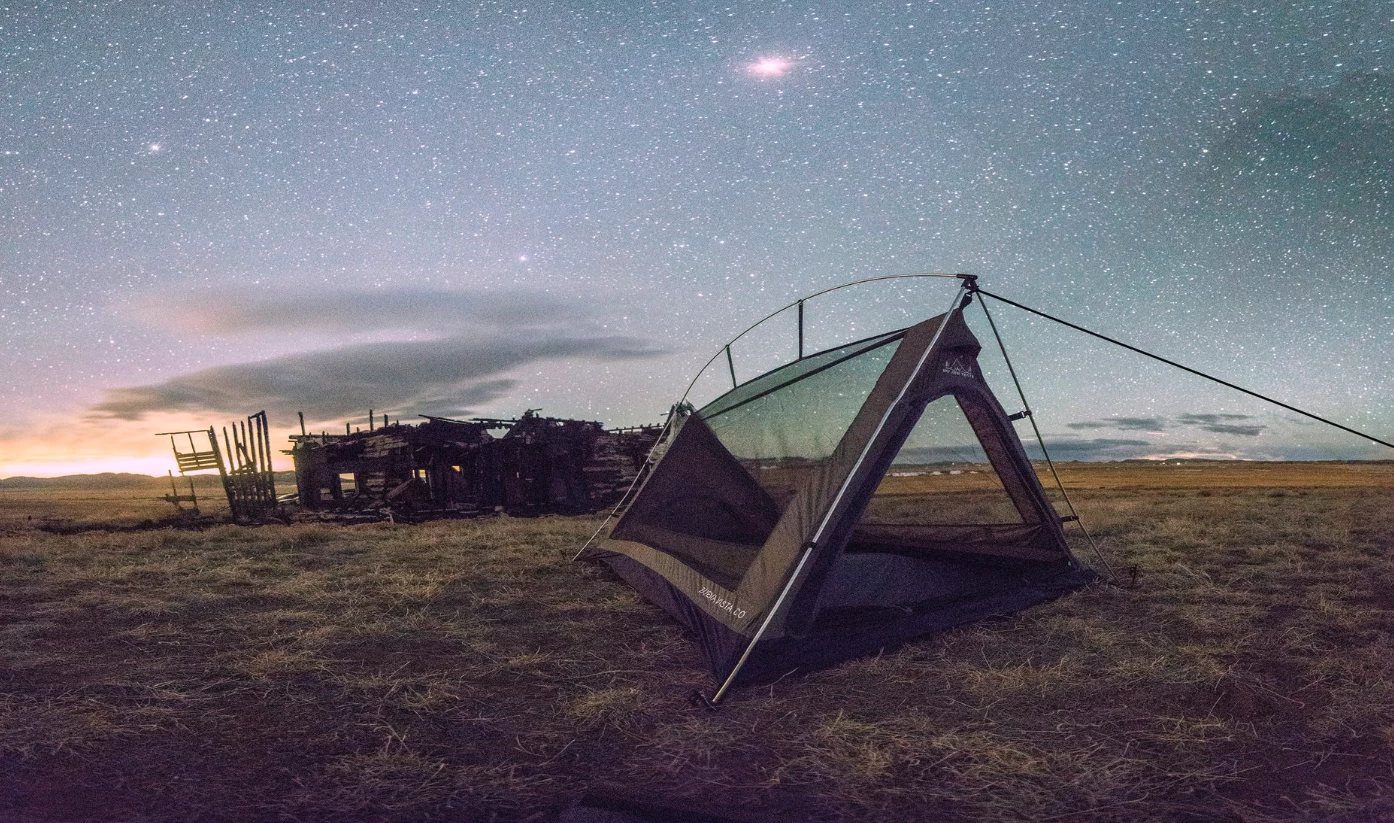Perhaps the best part of spending a night outdoors in a tent is lying on your back and watching an explosive astronomical performance play out on the stage of dark wilderness sky. The average tent, however, isn't optimized for the experience. What good is a gorgeous star-filled sky if you're lying below an opaque rain fly? Colorado startup Sky View Tents looks to create a better solution, combining a high-visibility mesh with an interior rainfly into what it believes is the best stargazing tent ever. And the tent comes in both car camping and backpacking weight classes.
Sky View founder Joe Bissonnette conceived the idea for a better stargazing tent on a particularly inspiring trip to Mexico in 2022. Watching a large, vivid shooting star fly past them on a patch of Cabo San Lucas beach somewhere around 4 a.m., he and his fiancée Zari began talking about how nice it would be to retire for the night right there on the beach, in a tent, and continue enjoying the star show. They began brainstorming the ultimate stargazing tent.
Yes, there are multiple tents and shelters hitting the market every week with transparent mesh bodies or roofs capable of delivering wide-spanning views of the stars above. But those tend to require a common pre-bedtime dilemma that requires choosing either the warmest, most wind/weatherproof coverage (i.e. rainfly installed and staked taut) or open views through see-through mesh left completely unprotected by a waterproof fly that remains in its stuff sack.
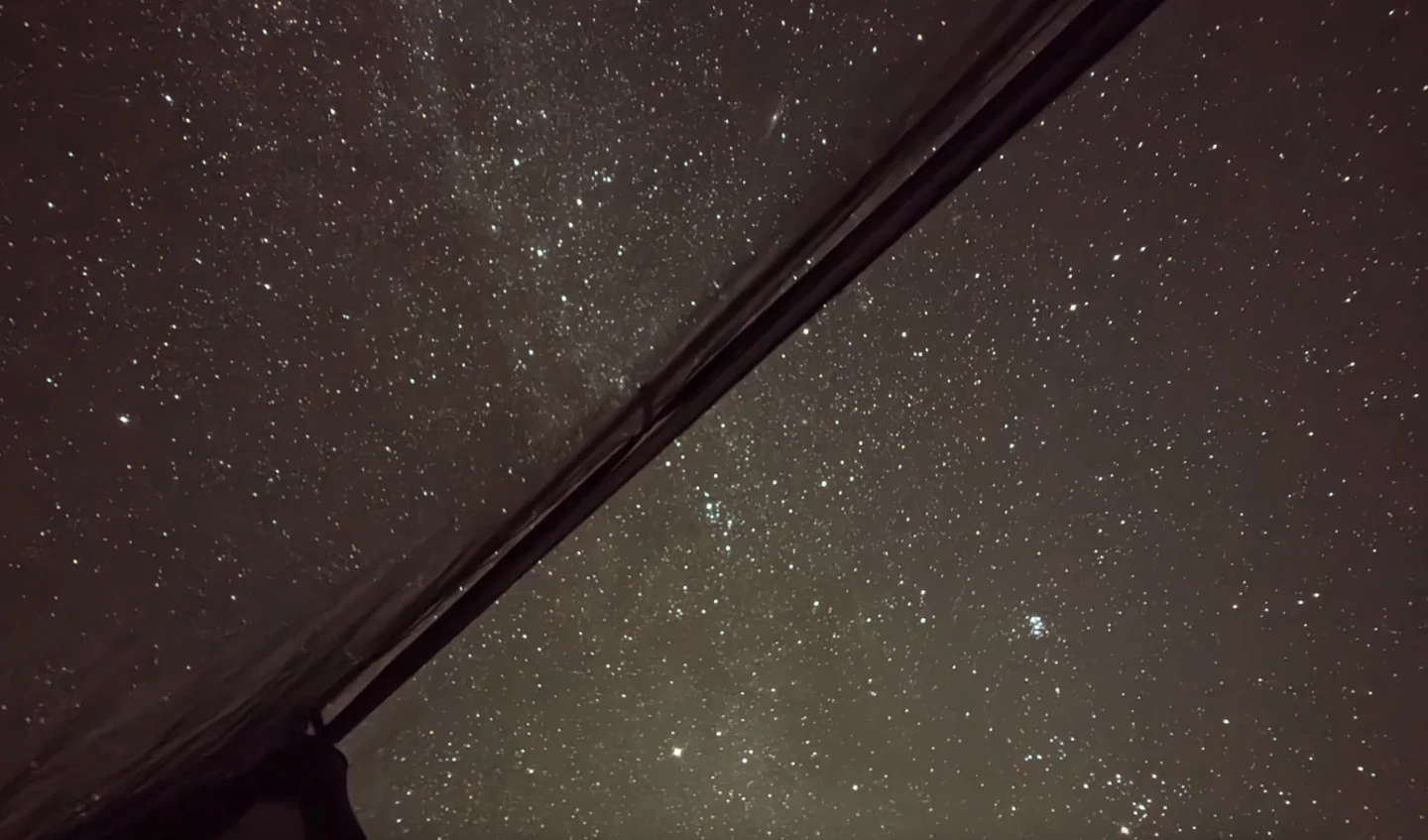
If the night is warm and perfectly clear, this may not be a problem at all, but given the fast-changing weather on the beach, in the mountains and in the desert, it can be a mistake to count on that idyllic weather lasting until morning. And who wants to run outside in the middle of the night to fiddle around with guy lines and stakes after sleeping soundly inside a tent?
Another solution, which we've seen more in rooftop tent (RTT) design than ground tents, is the so-called "skylight," a piece of transparent, weatherproof plastic on the roof that provides a way of viewing the stars without interrupting the weatherproofing package. Sky View explored this possibility when it first started its research but ultimately had concerns about the longterm durability of a such a panel being repeatedly folded and unfolded in a portable tent – perhaps that's why the feature remains the domain of flatter-folding RTTs, not sack-stuffed ground tents.
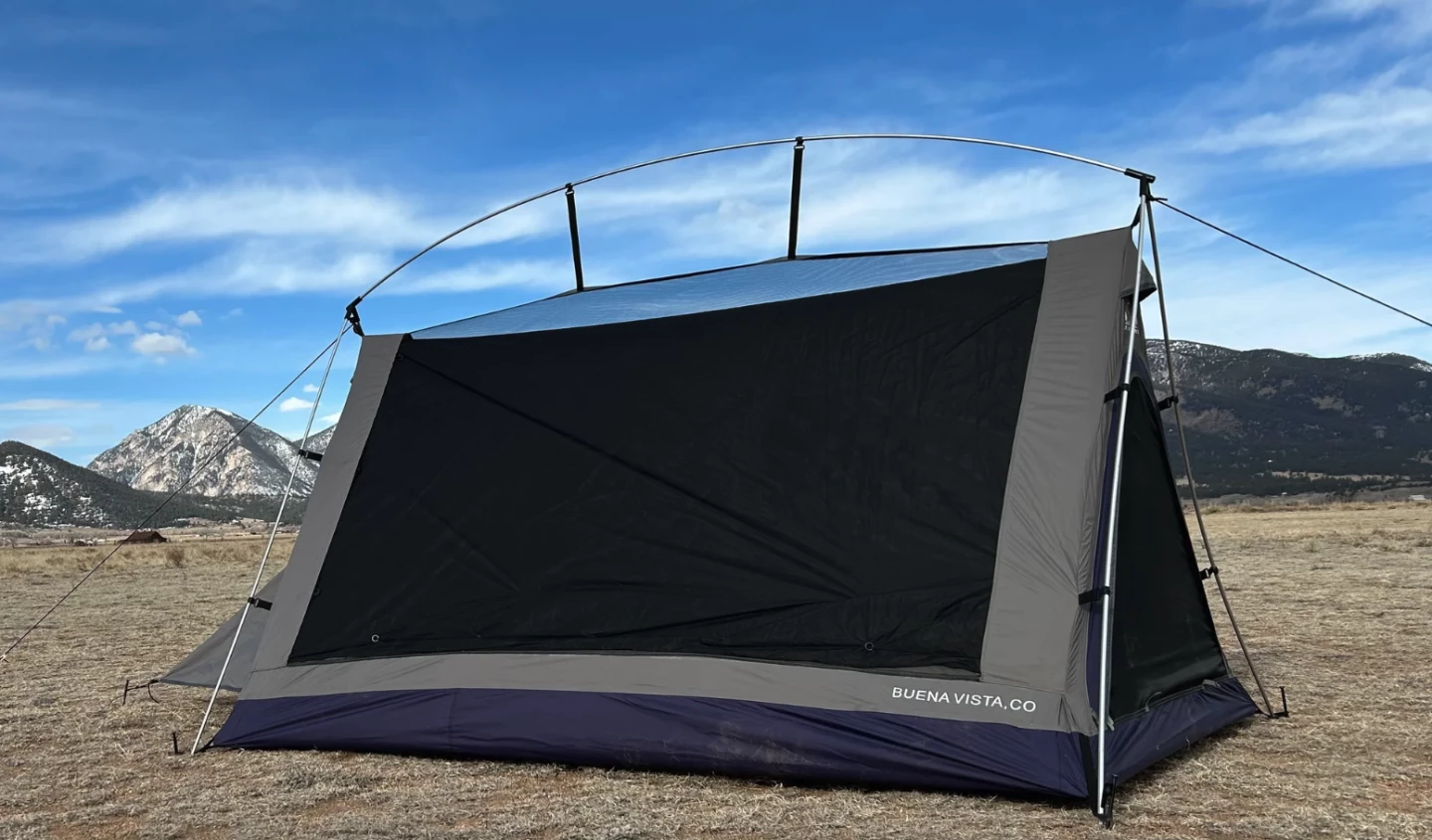
Sky View ultimately turned the tent inside out, developing an interior rain fly system that works almost like an A-frame shower curtain. The fly hangs on its own taut line below the mesh tent peak and simply pulls closed from inside. The lower edge of the fly sits between the outer mesh and an inner waterproof fabric layer that prevents water from dripping inside. The water instead rolls down the fly and through the lower mesh edge, onto the exterior tub floor fabric and onto the ground.
The idea behind this patent-pending inner fly system is that you can enjoy views of the stars without having to run outside and install the fly in the middle of the night if the weather turns chilly or rainy. If you feel that first raindrop or two or get a little chilly while sleeping, simply pull the fly closed from within the comfort of your sleeping bag, lie back down and drift right back to sleep.
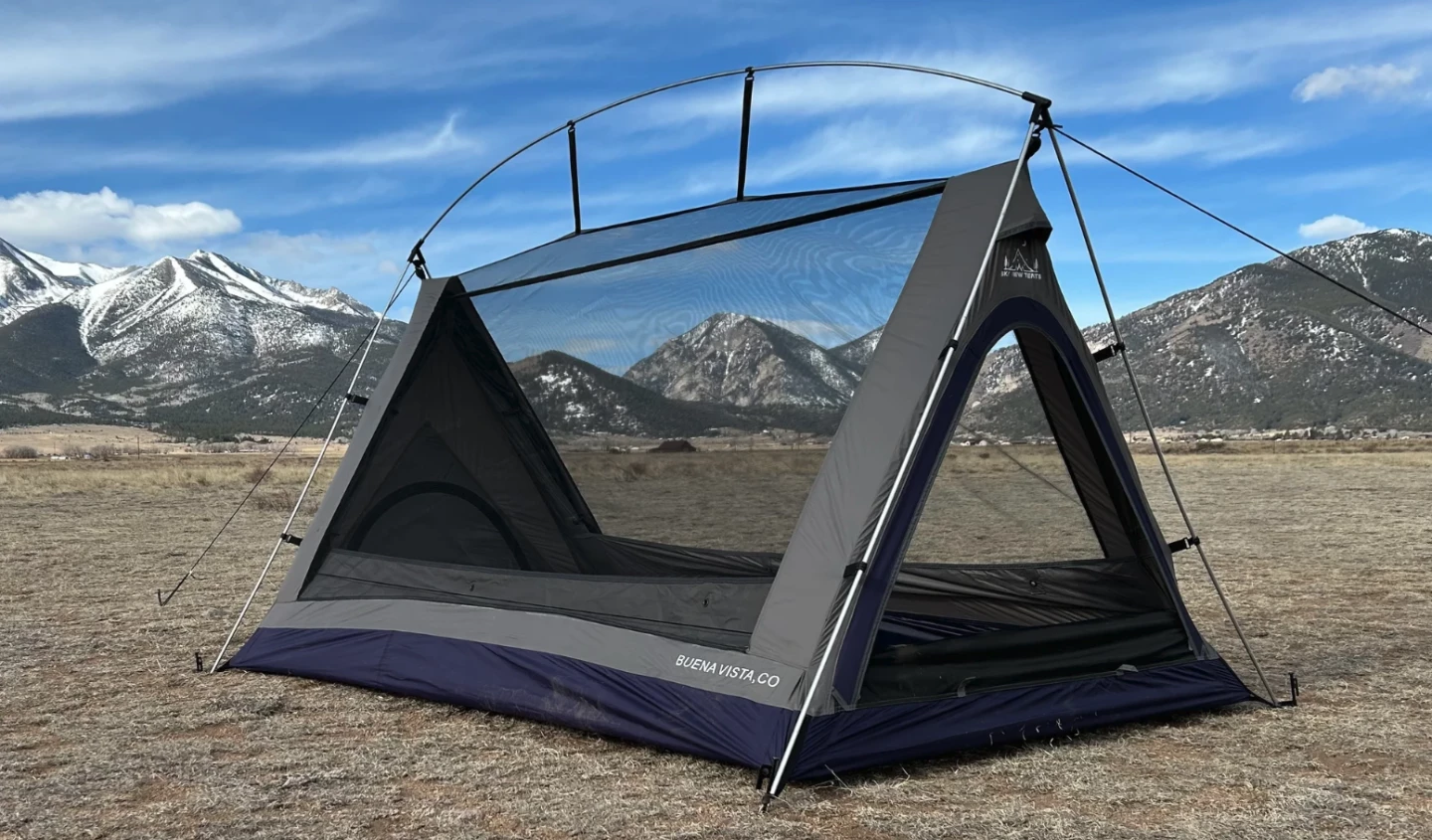
To complement this new style of fly, Sky View uses a particularly clear, high-visibility mesh. UltraVue 2 polyester mesh was specially designed by Alabama-based Phifer to provide a near-invisible screen option for keeping flies, mosquitoes and other pests out of homes and buildings. It's finished with a Water Shed coating meant to keep water, dirt and grime from sticking and interfering with those crystal-clear views.
Sky View first launched its design combo on the 11.8-lb (5.4-kg) Sky View XL car camping tent, which uses a large, burly external A-frame pole structure. This year, it added the more portable Backpacker model, which weighs in at a lightweight 4.6 lb (2.1 kg) when fully packed with tent body, poles, stakes, carry bags and all. The Backpacker can also be pitched using hiking poles, leaving behind Sky View's 10-mm (0.4-in) aluminum poles to bring packed weight down to 3.25 lb (1.5 kg).
The Backpacker is designed to accommodate two people on its 52 x 80-in (132 x 203-cm) floor. It's available now for US$349. The Sky View XL is designed to fit three adults or a family of four atop its 90 x 90-in (229-cm) floor, retailing for $399. It pitches with heavier duty 19-mm (0.75-in) aluminum poles.
This YouTube short shows a better look at the rain fly and UltraVue mesh in action.
Source: Sky View
